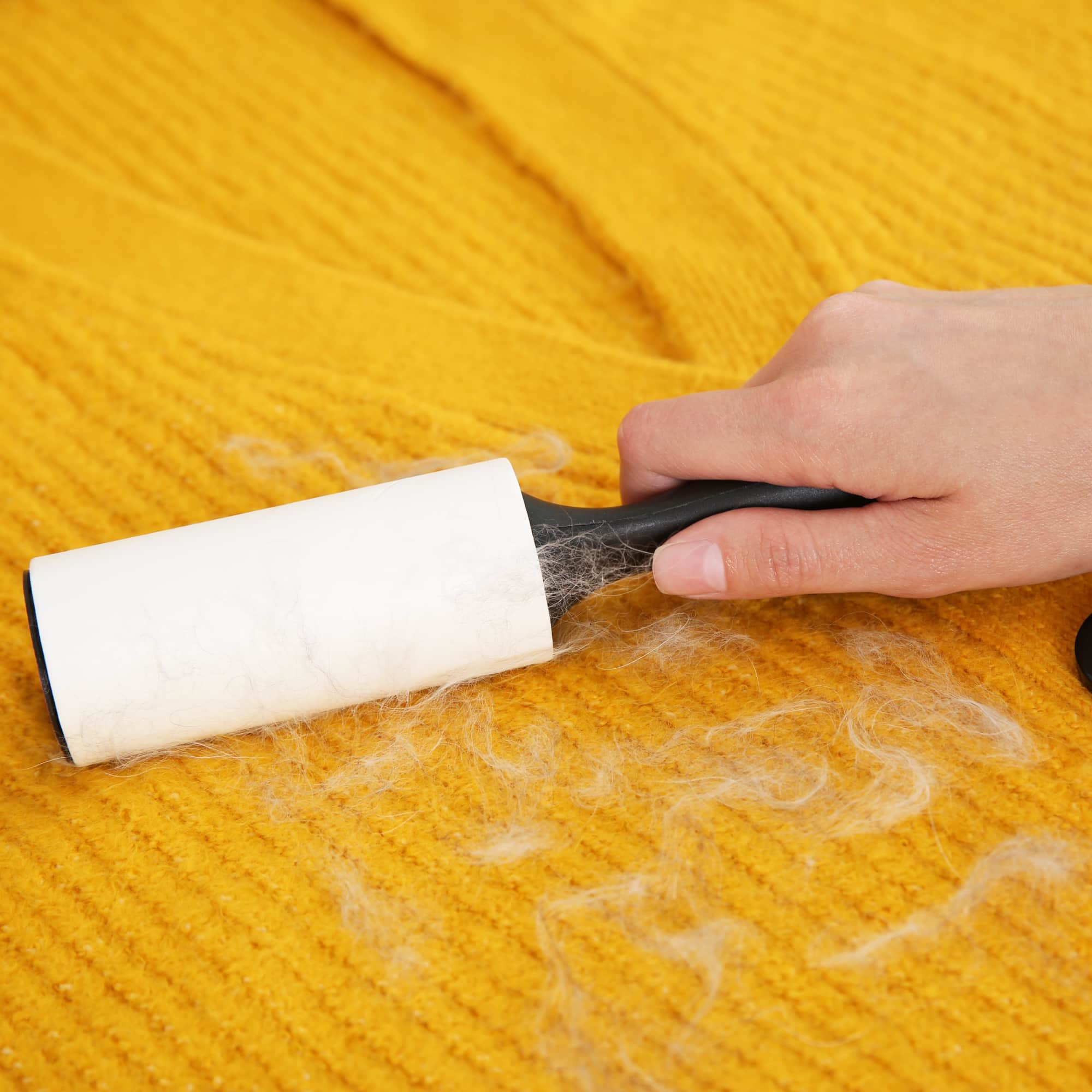
- POPSUGAR Australia
- Living
- Try These Lint-Removal Hacks When You Can't Find a Roller
Try These Lint-Removal Hacks When You Can't Find a Roller

There’s nothing more annoying than throwing on a cute outfit, only to realise your leggings, sweater, or coat are covered in lint – or worse, pilling. How can something so teeny tiny be such a hassle to clean up? Of course, it’s during these fashion emergency moments that you realise you forgot to pick up a new lint roller or brush at the store. To prevent this from happening, it’s important to have a few other lint-removal tactics in your clothing toolkit. From tape to fabric shavers, here are the best ways to remove lint from clothing.
How to Remove Lint From Clothing
Lint rollers and lint brushes are the easiest and quickest way to remove lint from clothing. Mini versions of both fabric gadgets can often be found in the travel-size section, too, making them ideal for on-the-go use and travel. A few swift strokes are all it takes to remove lint, pet hair, and even pilling.
While a lint roller or brush can get the job done almost all the time, sometimes you need to call in reinforcements for larger lint buildups. You may also find that certain fabrics like wool respond better to other types of removers.
How to Remove Lint From Clothes Without a Roller
No roller? No problem! Try removing lint from clothes the tried-and-true way with a piece of tape. Dab the area with the sticky side of the tape (if you have double-sided tape, even better), and watch as large portions of lint get peeled away with one tug.
According to Tailor It Yourself, sweater stones (also called fuzz bricks or pumice stones) are also a great way to get rid of lint and pilling. They can be used on just about any type of fabric, just be sure to brush the linen slowly and gently to prevent damaging.
Alternatively, you can also hand-run a dryer sheet over your clothes. This will help remove static and lint while also leaving your clothes smelling like fresh laundry. Considering that dryer sheets contain static-fighting properties that are usually made for a variety of fabrics, you don’t have to worry about possibly damaging your sweaters and coats while you’re removing lint, according to Bounce.
How to Remove Lint From Clothes in a Washing Machine
It’s possible to remove lint from clothes during a wash load, but you’ll need to make sure of a few things. According to The Spruce, improperly sorting or overcrowding the machine with too many items can cause the lint from one shirt to grab onto another. In addition to this, washing fuzz-prone clothes like sweaters and sweatshirts inside out can not only help get lint off of these clothes, but it can also prevent lint from clinging to other things in your machine.
While the combination of water and pressure helps loosen lint, so can utilizing fabric softener or a dryer sheet. Before you put your clothes in the dryer, ensure the dryer’s lint trap isn’t clogged. As usual, refer to the clothes’ tags for specific temperature, cycle, and drying instructions to ensure you won’t damage your clothing.
How to Remove Lint From Woolen Clothes
In addition to using a sweater stone and fabric shaver, you can remove lint from woolen clothes with a fabric comb. Similar to a lint roller or brush, you can use a fabric comb in a downward motion to remove lint and pilling from wool-based linens, per Packer Hacker Reviews. However, be sure to check that your fabric comb is wool-friendly to avoid snags.
How to Remove Lint With a Fabric Shaver
When it comes to combating lint and pilling, a fabric shaver is your best friend. Fabric shavers come in different shapes and sizes, but they’re similar looking to a portable handheld fan. These mini fabric gadgets feature multiple blades that work to shave and vacuum lint, fuzz, and pilling, all at the push of a button. Simply power on the device and, without applying any pressure, run it over the fabric from side to side. When you’re finished, empty the device like you would a vacuum. Some fabric shavers, like the Beautural Fabric Shaver and Lint Remover, are equipped with various safety covers for specific fabrics such as cotton, synthetic fibers, and wool.


